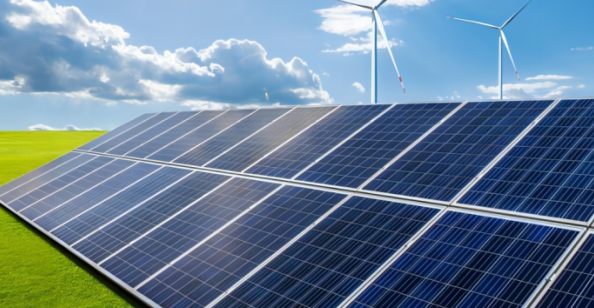1.Photovoltaic power generation and distributed photovoltaic power generation
01. Photovoltaic power generation: This is a power generation method that uses solar radiation to directly convert into electrical energy. Today, when people talk about solar power, they are usually referring to photovoltaics.
02. Distributed photovoltaic power generation: refers to power generation facilities built near users. Its operation mode is mainly for users' own use, and excess power will be transmitted to the power grid. This power generation method emphasizes adapting to local conditions, clean and efficient, decentralized layout and nearby utilization, aiming to make full use of local solar energy resources and reduce the consumption of fossil energy.

2. History and development of photovoltaic power generation
In 1839, French physicist Becquerel discovered the "photovoltaic effect", which means that when light shines on a metal electrode in a conductive liquid, the current will increase.
In 1930, Lange first proposed using the "photovoltaic effect" to manufacture solar cells to convert solar energy into electrical energy.
In 1932, Odubot and Stolla produced the first cadmium sulfide solar cell.
In 1941, Audu discovered the photovoltaic effect on silicon.
In 1954, Bell Labs in the United States developed a monocrystalline silicon solar cell with an efficiency of 6%, which was the world's first practical solar cell. In the same year, Wake discovered the photovoltaic effect of nickel arsenide and deposited a nickel sulfide film on glass to create a solar cell, marking the birth and development of practical photovoltaic power generation technology.

3.Why is photovoltaic power a green and low-carbon energy?
Photovoltaic power generation has significant energy, environmental protection and economic benefits and is one of the best green energy sources. Under my country's average sunshine conditions, installing a 1-kilowatt photovoltaic power generation system can generate about 1,200 kilowatt-hours of electricity a year, reduce coal usage by about 400 kilograms, and reduce carbon dioxide emissions by about 1 ton. According to research, the carbon dioxide emission reduction effect of installing 1 square meter of photovoltaic power generation system is equivalent to planting 100 square meters of trees. The development of renewable energy sources such as photovoltaic power generation is an effective means to solve environmental problems such as haze and acid rain.
4. Regarding energy consumption and pollution issues in the production of photovoltaic cell modules
The production process of photovoltaic cells does require a certain amount of energy consumption, especially in the stages of industrial silicon purification, high-purity polysilicon production and monocrystalline silicon rod/polycrystalline silicon ingot production stages. However, photovoltaic cells continue to produce energy throughout their 20-year lifespan. According to estimates, under my country's average sunshine conditions, the energy return of a photovoltaic power generation system during its entire life cycle exceeds its energy consumption by more than 15 times. The energy payback period of a 1 kilowatt rooftop photovoltaic grid-connected system installed at the optimal tilt angle in Beijing is 1.5-2 years, which is far shorter than the service life of the photovoltaic system. At present, the improved Siemens method adopted by my country's polysilicon production enterprises can achieve closed-loop production and recycle the by-product silicon tetrachloride and exhaust gas to achieve clean production and meet environmental protection requirements.
5. Potential and Prospects of Photovoltaic Power Generation
The Earth's surface receives solar radiation capable of meeting tens of thousands of times the world's energy needs. According to the International Energy Agency, installing solar photovoltaic systems on 4% of the world's deserts would be enough to meet global energy needs. The market potential of photovoltaic power generation installed in existing buildings in my country alone is about 3 trillion kilowatts, and the market potential of photovoltaic power generation in the vast Gobi in the west is about billions of kilowatts. With technological advancement and large-scale application, the cost of photovoltaic power generation will be further reduced, making it a more competitive energy supply method and expected to gradually become the dominant energy source in the future.







